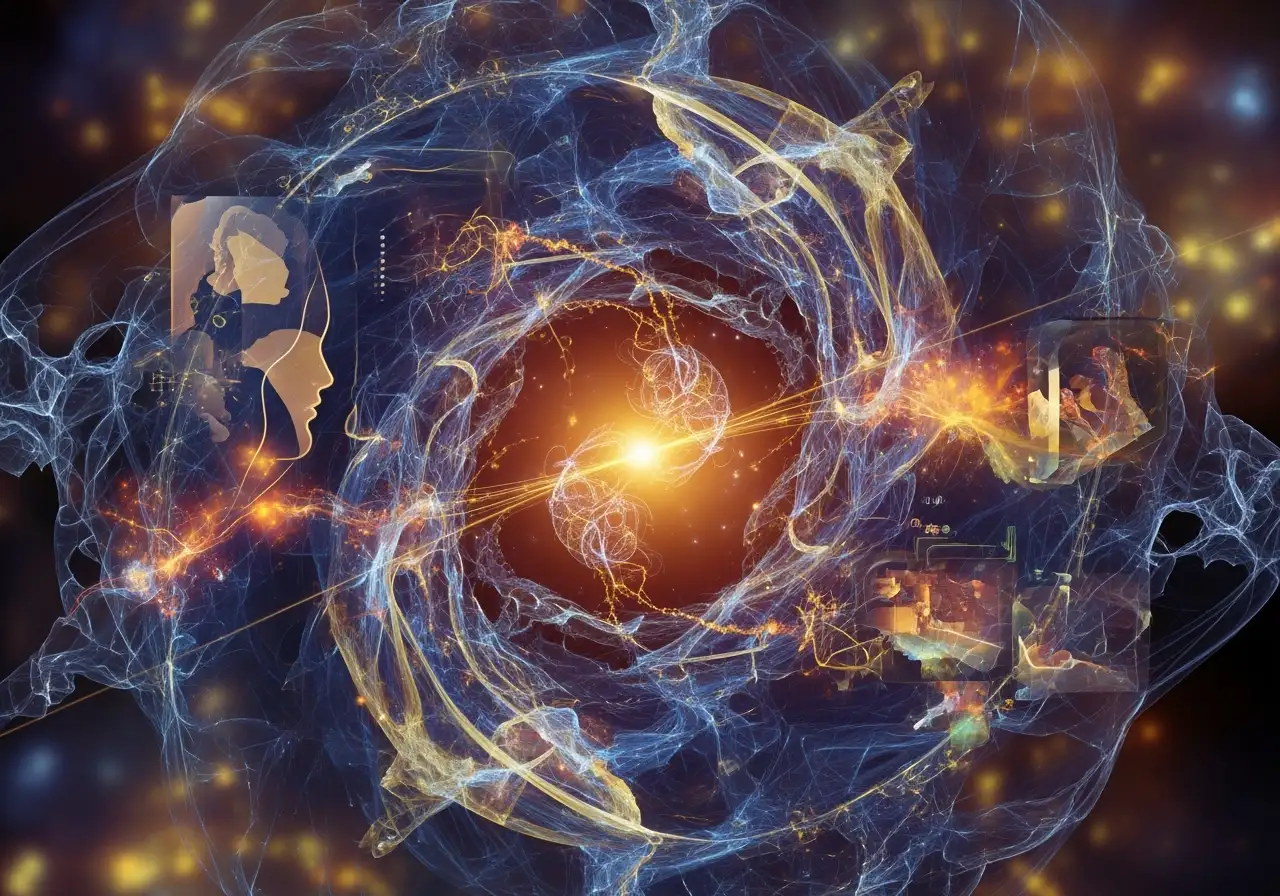The Dynamic Canvas of Consciousness
The Dynamic Canvas of Consciousness
Have you ever wondered why you react a certain way, or why some experiences transform you more deeply than others? We often think of our “character” or “personality” as fixed, a set of traits we’re born with. But what if this understanding is far too simplistic? What if your inner world isn’t a static blueprint, but a vibrant, interconnected system that you can actively shape?
In the groundbreaking Quantum Mindfulness framework, we delve into a core scientific concept that redefines our understanding of self: the Psychodynamic Dimensions. Far from being mere abstract ideas, these ten dimensions are the fundamental energetic substrates, the irreducible building blocks of your consciousness and personality. Think of them as the energetic components of your inner operating system, constantly interacting and influencing every thought, feeling, and action you experience. They form the very scaffolding of consciousness itself, providing the basis for conscious awareness and personality organization.
Traditional psychology might label someone “conscientious” based on observable behaviors like organization and responsibility. But the Psychodynamic Dimensions approach goes deeper, seeking to understand the underlying energies that create conscientiousness. It recognizes that this trait isn’t just a surface-level behavior; it’s a dynamic interplay of dimensions like the Psycho-Protective Dimension (embodying principles of measure, limit, and restraint, and setting boundaries), the Psycho-Motivational Dimension (driving action and translating values into sustained action), and the Psycho-Foundational Dimension (grounding mental energies in reality and serving as a critical grounding function). These dimensions, along with others, mutually influence each other, producing complex psychological phenomena.
The truly revolutionary insight lies in their dynamic interconnectedness. These ten dimensions don’t operate in isolation. Instead, they form a lively, active network within you. A change or development in one dimension ripples through the entire system, leading to holistic character growth. Imagine a research scientist grappling with an ethical dilemma. A traditional view might analyze their decision-making, morals, or emotions separately. However, through the lens of Psychodynamic Dimensions, we see a complex interaction: their Psycho-Meditative Dimension seeking structured understanding and analytical clarity (often the locus of intentional collapse), their Psycho-Protective Dimension defining ethical limits and maintaining self-integrity, their Psycho-Empathic Dimension considering impact on others and fostering intersubjective resonance, and their Psycho-Motivational Dimension translating principles into action and providing cognitive endurance. When the scientist strengthens their empathy, perhaps through practices that cultivate the Psycho-Empathic Dimension, it doesn’t just make them “nicer”; it inherently affects their ethical clarity (Psycho-Meditative) and their drive to act with integrity (Psycho-Motivational). The entire inner network evolves, demonstrating psychodynamic harmonic alignment.
This dynamic understanding is where Quantum Mindfulness becomes profoundly relevant. It’s not just about passive mastery or non-reactive observation, as in classical mindfulness; it’s about gaining conscious insight into this intricate inner architecture. By learning how these dimensions arrange themselves and interact, you begin to see the subtle origins of your responses, emotional patterns, and cognitive biases. You move beyond passively reacting to your inner world and start to consciously engage with it. The Quantum Observer, through conscious observation and vectorized awareness, performs cognitive measurement, initiating the psychodynamic collapse of probabilistic mental states into actualized experience. This is an active constitutive force view of perception, where the observer-participant dynamic is central.
The framework asserts that our mental states initially exist in a state of cognitive superposition, a probabilistic field of multiple possibilities. Conscious attention acts as the primary catalyst, triggering psychodynamic collapse, resolving this field into a singular, definite experience. This isn’t a passive process; it’s an opportunity for intentional collapse. Through dimensional attunement and practices like superpositional cognitive engineering, we can learn to skillfully influence which potentials actualize. This allows for profound psychological transformation via ontological reassignment, enabling us to transcend limiting inherited scripts and cultivate a sovereign architecture for our inner world.
Understanding these psychodynamic dimensions facilitates consciousness refinement and psychodynamic balance restoration. It addresses psychological disharmony, which often arises from destructive interference or dimensional misalignment within this complex network. By actively investigating the structure of our mental phenomena, we can alleviate cognitive strain and dysfunction, moving towards a state of calculated turbulence – a dynamic equilibrium where dimensions remain actively engaged and responsive within productive thresholds. This journey empowers us to develop perceptual freedom and cognitive agency, actively shaping our experienced reality rather than merely reacting to it.
This framework empowers you to move beyond the idea of a fixed self and embrace the profound potential for self-creation. It reveals that refining your character isn’t about forcing external ideals, but about skillfully working with your innate inner structure, fostering a dynamic and interconnected internal landscape that supports your highest potential.
How can understanding this dynamic, interconnected inner world transform your daily life, your decisions, and your relationships? The possibilities are vast, and the journey of discovery has only just begun.






